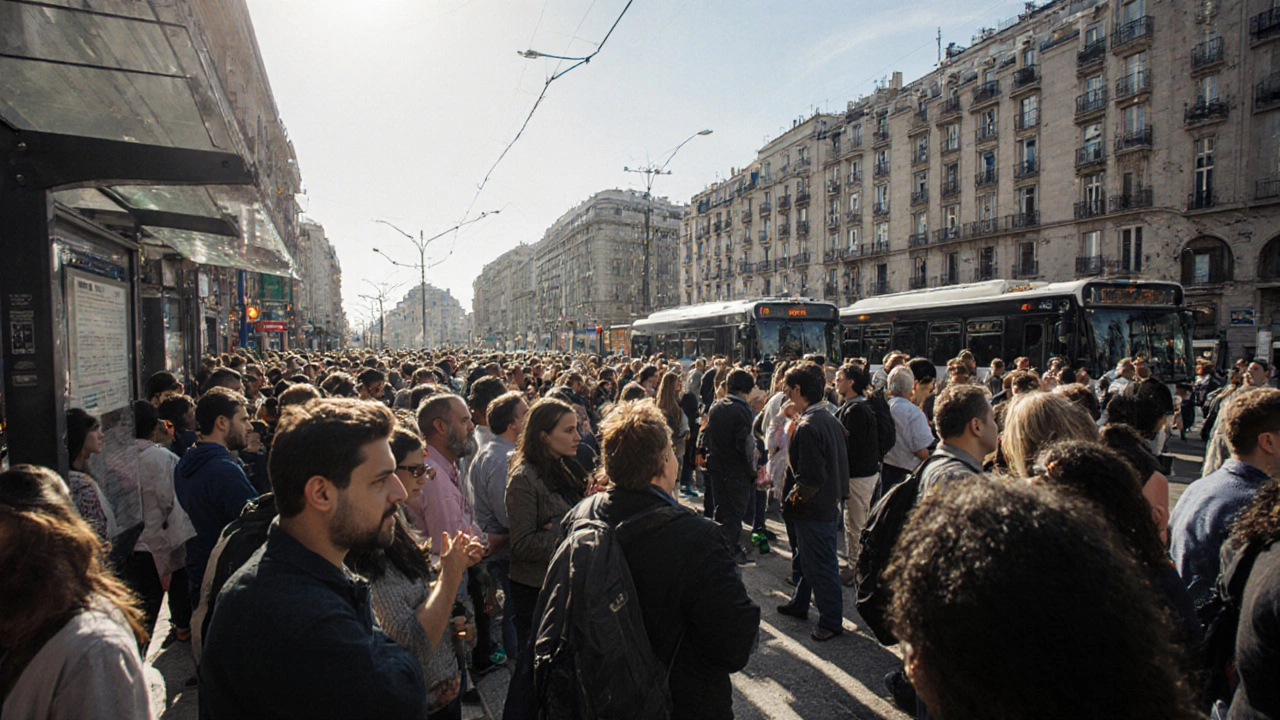When Damian Cortinas, chairman of ENTSO‑E, announced that a cascading overvoltage had plunged the Iberian Peninsula into darkness, the scale of the outage shocked everyone.
At exactly 12:33 CEST on 28 April 2025, the power systems of Spain and Portugal collapsed, leaving roughly 60 million people without electricity. The blackout briefly flickered into southwestern France, but the rest of Europe kept the lights on.
What Went Wrong? The Technical Chain Reaction
The event, now catalogued as Iberian Peninsula blackoutSpain and Portugal, unfolded in two distinct oscillation windows. First, from 12:03 to 12:07, a local voltage swing rattled Spain’s grid. Then, a more dangerous inter‑area oscillation surged between 12:16 and 12:22, setting the stage for the final spike.
At 12:33, voltage in southern Spain surged sharply, dragging Portugal’s system along. Simultaneously, frequency dropped, prompting generators to trip offline. The loss of synchronism forced the high‑voltage direct‑current (HVDC) links to France to disconnect automatically, sealing the blackout.
Who’s Who: The Players on the Front Lines
Red Eléctrica de España (REE) sounded the alarm, dubbing the incident “el cero” – the zero. REE’s emergency protocols kicked in within minutes, coordinating with power plants to restart generating sets. Across the border, Redes Energéticas Nacionais (REN) reported that the sudden voltage jump in Spain destabilised its imports, compounding the loss.
Spanish Prime Minister Pedro Sánchez urged calm and warned against misinformation, while Andalusia’s regional president Juanma Moreno briefly floated the cyber‑attack theory before officials dismissed it as speculation.
Two EU‑appointed investigators – Klaus Kaschnitz and Richard Balog – have been tasked with dissecting the three hours before the collapse. Their mandate is technical, not punitive, aiming to deliver lessons for future grid design.
Impact on Daily Life: From Metro Stops to Tennis Courts
The blackout crippled metro networks in Madrid, Barcelona and Lisbon, halted traffic‑light cycles, and forced airports to operate on backup power. Air‑traffic control lost radar overlays for several hours, prompting emergency landings and diversions.
Banking services felt the pinch too; ATMs went cold, and point‑of‑sale terminals shut down, leaving shoppers stranded. Even the Madrid Open tennis tournament saw matches paused as the stadium lights fizzled out.
Tragically, eight lives were lost – seven in Spain and one in Portugal – in incidents ranging from candle‑started fires to carbon‑monoxide poisoning from improvised generators. Emergency responders worked around the clock, navigating streets lit only by handheld torches.
Recovery Speed and What It Reveals About Grid Resilience
By 07:00 local time on 29 April, REE announced that 99.95 % of the peak demand had been restored. The rapid comeback was credited to pre‑planned black‑start procedures and the coordinated effort of dozens of power plants.
However, the incident exposed a glaring weakness: the grid’s inability to auto‑reset after a cascading voltage event. Protection relays correctly isolated the French‑Spanish HVDC corridor, but the loss of synchronism prevented a smoother transition to backup supplies.
Why This Matters for Europe’s Renewable Future
Spain and Portugal are racing toward renewable‑centric power mixes, with wind and solar slated to cover more than 70 % of generation by 2030. The blackout reignited debate over whether current grid‑defence plans can handle the volatility that high‑renewable penetrations bring.
Experts compare the event to the 2003 Italy blackout and the June 2024 South‑Eastern Europe outage, but stress that this is the first documented case of a pure “cascading overvoltage” failure. The upcoming ENTSO‑E full report, due early 2026, is expected to reshape European grid‑code requirements.
Looking Ahead: Lessons and Legislative Action
EU regulators have already signalled tighter standards for automatic system‑restart capabilities. Meanwhile, national courts in Spain are probing the incident’s legal dimensions, though a cyber‑attack has been officially ruled out.
For consumers, the takeaway is clear: even as the lights become greener, the underlying infrastructure must evolve faster than the renewable rollout. The Iberian blackout serves as a stark reminder that modern grids are complex ecosystems where one spike can knock out millions.
Frequently Asked Questions
What triggered the cascading overvoltage?
A sudden voltage rise in southern Spain at 12:33 CEST propagated to Portugal, causing generators to trip and a chain reaction of spikes. The overvoltage overwhelmed automatic protection systems, leading to a total grid collapse.
How many people were affected and what were the human costs?
Approximately 60 million residents of Spain and Portugal lost electricity for several hours. At least eight fatalities were reported – seven in Spain from fires and carbon‑monoxide poisoning, and one in Portugal under similar circumstances.
Did a cyber‑attack cause the blackout?
No. Initial speculation by regional officials was quickly dismissed. Both the Spanish government and Red Eléctrica confirmed that technical grid failures, not malicious hacking, were responsible. The investigation continues on other fronts.
What steps are being taken to prevent a repeat?
EU regulators plan stricter rules for automatic black‑start capability, and ENTSO‑E will publish a detailed technical report in early 2026. Spain and Portugal are also reviewing their System Defense Plans to better contain voltage spikes.
How does the blackout affect the renewable energy transition?
The incident highlights that high shares of wind and solar increase grid volatility. Policymakers now face pressure to modernise transmission networks, add more frequency‑response resources, and upgrade protection schemes before renewable targets are met.
